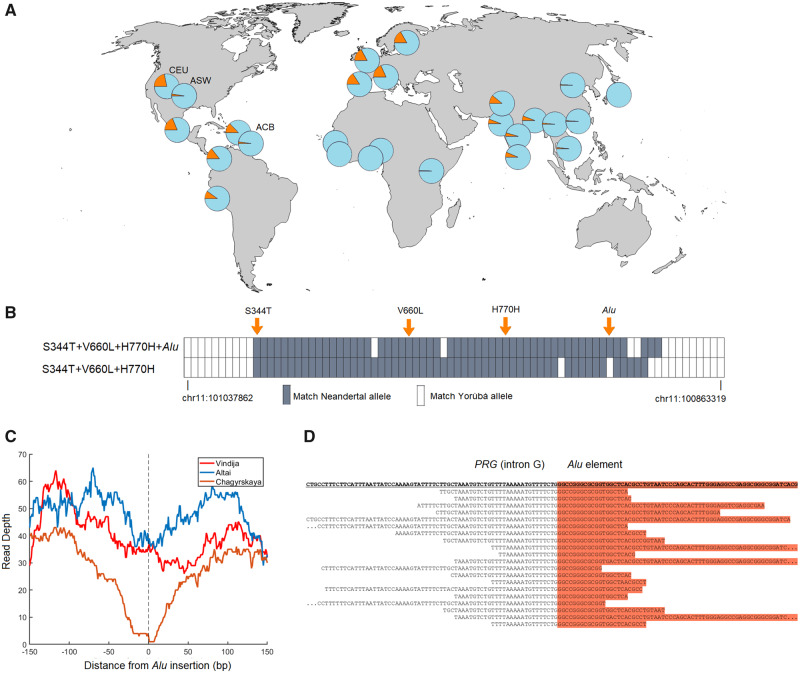Fig. 1.
Geographic distribution of V660L, introgressed Neandertal haplotypes and the Alu element in PGR. (A) Allele frequency of V660L (rs1042838) in 26 populations. Data from the phase 3 release of the 1000 Genomes Project. The African American populations (ASW, African Ancestry in Southwest United States; ACB, African Caribbeans in Barbados) have a lower frequency of V660L, similar to that in African populations, whereas North Americans with European ancestry (e.g., CEU: Utah Residents with Northern and Western European Ancestry) have frequency similar to European populations. (B) Similarity of present-day chromosomes carrying S344T+V660L+H770H with (n = 256) and without (n = 89) the Alu element to three high-coverage Neandertal genomes. In addition to the four polymorphisms indicated, data for 74 SNPs where a minor or absent allele among the Yoruba in the 1000 Genomes Project occurs three or more times among the three Neandertals. A gray box indicates that the major allele among the chromosomes with (above) or without (below) the Alu insertion matches the allele that occurs three or more times among the Neandertals. (C) Read depth for three high-coverage Neandertal genomes when aligned to the reference human genome (hg19). Note the symmetrical drop in read depth at the site for the Alu insertion in the Chagyrskaya Neandertal genome and a less pronounced drop in coverage in the Altai genome. (D) DNA fragments from the Chagyrskaya genome aligned to a DNA sequence carrying the Alu element around the 5′-end of the Alu element (chr11:100,911,793).

